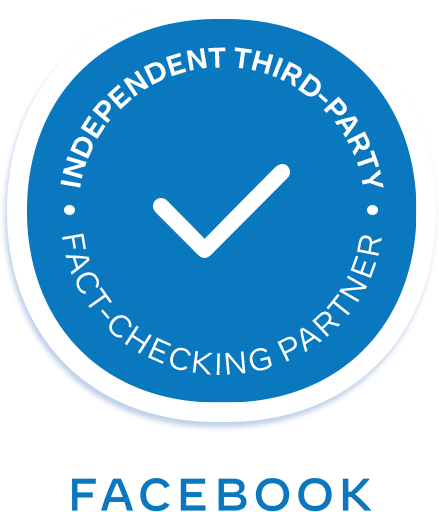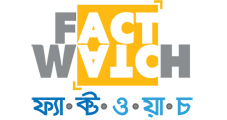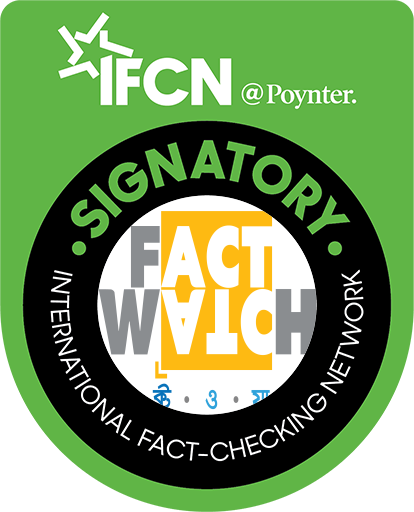ফ্যাক্টওয়াচের তথ্যযাচাই পদ্ধতি
ফ্যাক্টওয়াচ ইউনিভার্সিটি অফ লিবারেল আর্টস বাংলাদেশ (ইউল্যাব) এর একটি প্রকল্প।
এই মাধ্যমে মিডিয়া স্টাডিজ এবং জার্নালিজম বিভাগের স্নাতক পর্যায়ের শিক্ষার্থীরা সামাজিক যোগাযোগ মাধ্যমসহ অন্যান্য মাধ্যমে প্রচারিত বিভিন্ন খবরের সত্যতা যাচাই করে থাকে।
এসব বিভিন্ন মধ্যমে অসংখ্য দাবি উত্থাপিত হয়, যার সত্যতা সংশ্লিষ্ট তথ্য বিশ্লেষণের মধ্যমে যাচাই করা হয়। তথ্য যাচাই বা ফ্যাক্ট চেকিং এর বিষয়বস্তু নির্বাচনের ক্ষেত্রে যেসব প্রশ্ন বিবেচনা করা হয়:
- দাবির বিষয়বস্তুটি কি উল্লেখযোগ্য বা জনগুরুত্বপূর্ণ?
- এটি কি কোনো গোষ্ঠী বা উল্লেখযোগ্যসংখ্যক মানুষকে প্রভাবিত করতে পারে?
- জনসাধারণের জন্যে এই বিষয়ে সিদ্ধান্ত নেওয়া কী কঠিন? সংশ্লিষ্ট তথ্য কী অস্পষ্ট বা দুর্বোধ্য? এসব তথ্য কী সহজলভ্য?
- সংবাদটি কি এরকম উস্কানিমূলক বা সংবেদনশীল, যে এর সত্যতা যাচাই করা না থাকলে এটি কোনো ব্যক্তি, প্রতিষ্ঠান বা গোষ্ঠীর জন্য ক্ষতিকর হতে পারে?
তথ্যযাচাইয়ের ধাপসমূহ
ফ্যাক্টওয়াচে প্রকাশ করার আগে তথ্য যাচাইয়ের জন্য আমরা নিম্নলিখিত নিয়মগুলো অনুসরণ করে থাকি:
১। যে সংবাদটির সত্যতা যাচাই করা হবে, তার উৎস কি? কেন এই তথ্যের যাচাই করা দরকার? উৎস শনাক্ত করার ক্ষেত্রে আমরা তথ্যের স্ক্রিনশট এবং সংশ্লিষ্ট লিংকগুলো প্রতিবেদনে যুক্ত করে থাকি।
২। প্রয়োজনীয় গবেষণা সম্পন্ন করা সাপেক্ষে আমরা ঐ সংবাদটির সত্য/মিথ্যা সংক্রান্ত সিদ্ধান্ত গ্রহণ করি। প্রতিবেদনের এই ধাপে আমরা আমাদের মূল্যায়ন যুক্ত করি। তারপর ধাপে ধাপে আমাদের দাবির সপক্ষে প্রমাণ দাখিল করি।
৩। আমাদের উপাত্ত সংগ্রহের প্রাথমিক মাধ্যম হচ্ছে গণমাধ্যম ও সামাজিক মাধ্যম। কিন্তু প্রয়োজনে আমরা সংবাদটির প্রাথমিক উৎসের (যথা, কোনো ব্যক্তি, এজেন্সি, গোষ্ঠী বা সাংবাদিক) সাথে আলাপচারিতা কিংবা যোগাযোগের মাধ্যমেও এর সত্যতা যাচাই করে থাকি।
৪। তথ্য যাচাইয়ের উৎস নির্বাচনে আমরা প্রতিষ্ঠিত গণমাধ্যম, সংবাদ এজেন্সি কিংবা দায়িত্বপ্রাপ্ত অথরিটিকেই প্রামাণ্য বিবেচনা করি। সেরকম প্রামাণ্য সূত্র না পাওয়া পর্যন্ত আমরা সিদ্ধান্ত গ্রহণ করি না। ইমেজ বা ভিডিও যাচাইয়ের ক্ষেত্রে আমরা প্রতিষ্ঠিত ছবিযাচাই প্লাটফর্ম তথা গুগল ইমেজ, টিন আই রিভার্স ইমেজ সার্চ ইত্যাদির সাহায্য নিই।
৫। ফ্যাক্ট ফাইল বা প্রয়োজনীয় তথ্য সন্নিবেশ করে কোনো প্রতিবেদন রচনার ক্ষেত্রে আমরা একাডেমিক এবং স্বীকৃত জর্নালে প্রকাশিত গবেষণা নিবন্ধগুলো থেকে সূত্র নিয়ে থাকি।
৬। প্রতিবেদন প্রকাশের ক্ষেত্রে ফ্যাক্টওয়াচ সর্বোচ্চ পরিমাণ স্বচ্ছতা নিশ্চিত করে। আমরা আমাদের প্রতিটি প্রতিবেদনে পূর্ণাঙ্গ সূত্রনির্দেশনা দিয়ে রাখি। প্রতিবেদনের ধাপে ধাপে এই সূত্র সন্নিবেশ করা হয়, যাতে পাঠকের পক্ষে আমাদের তথ্যযাচাই এর প্রক্রিয়াটুকু পরিষ্কার হয়। প্রতিবেদনের শেষেও আমরা সবগুলো সূত্রকে নির্ঘণ্ট আকারে প্রদান করে থাকি। যদি এমন মনে হয় যে, সূত্রটি সাধারণের পক্ষে অপ্রবেশ্য কিংবা কোনো কারণে পরবর্তীতে খুঁজে পাওয়া নাও যেতে পারে – সেক্ষেত্রে সেই সূত্রের স্ক্রিণশট আমরা প্রতিবেদনে যুক্ত করি সূত্র প্রদানের অতিরিক্ত দায়িত্ব হিসেবে।
৭। তথ্যযাচাইয়ের রেটিং এর ক্ষেত্রে প্রতিবেদক প্রাথমিক রেটিং প্রস্তাব করেন। তারপর প্রতিবেদনটি নিয়ে সম্পাদক ও গবেষকদের মধ্যে আলোচনাসাপেক্ষে রেটিংটির যাথার্থ্য নিরূপণ করা হয়। অধিকাংশ ক্ষেত্রেই যাচাই পদ্ধতি স্বয়ংক্রিয়ভাবে রেটিং নির্ধারণ করে দেয়। অল্প কিছু ক্ষেত্রে যাচাই পদ্ধতি অনুসরণ করার পরেও রেটিং নিয়ে সম্পাদনা পর্ষদে দ্বিমত থেকে যেতে পারে। সেক্ষেত্রে ফ্যাক্টচেকারদের মধ্যে ভোটের মাধ্যমে রেটিং নির্ধারণের ব্যবস্থা রাখা হয়েছে।
৮। প্রতিটি প্রতিবেদনের ক্ষেত্রে আমরা তার রেটিংটি দুই জায়গায় প্রদান করি: প্রথমত, প্রধান ছবি বা ফিচারড ইমেজের ওপরে; দ্বিতীয়ত: প্রতিবেদনের শুরুতে।
ক্যাটাগরিসমূহ
ফ্যাক্টওয়াচ মূলত তিনটি জেনেরিক ক্যাটাগরিতে তার প্রতিবেদনগুলো সন্নিবেশ করে।
১. ইন্টারনেট গুজব: যেখানে সামাজিক মাধ্যম কিংবা গণমাধ্যমে ভাইরাল হয়ে যাওয়া যাবতীয় গুজব, ভূয়া ছবি, ভূয়া ভিডিও ইত্যাদি বিষয়ে ফ্যাক্টওয়াচের যাচাই প্রতিবেদন সন্নিবেশিত হয়।
২. ফ্যাক্টফাইল: গুজব নয়, আবার ঠিক ভাইরালও নয়, কিন্তু গণমাধ্যমে বা সামাজিক মাধ্যমে মনগড়া তথ্যের নানারকম পরিবেশনার কারণে আমরা অনেক বিভ্রান্তির মুখোমুখি হই। এই পরিসরে এ ধরনের বিষয়গুলোকে নিয়ে গবেষণাধর্মী এবং বিশ্লেষণাত্মক নিবন্ধ সন্নিবেশিত হয়। ফ্যাক্টফাইলে তিনটি সাবক্যাটাগরি আছে: তথ্য যাচাই, বিজ্ঞাপন যাচাই এবং লেখাজোখা। পণ্যের বিজ্ঞাপন যেহেতু ভোক্তা হিসেবে আমাদের তথ্য পাওয়ার একটি গুরুত্বপূর্ণ উৎস, সেজন্য একে একটি সাব ক্যাটাগরি হিসেবে ফ্যাক্টওয়াচ বিবেচনা করে। রাজনৈতিক প্রচারণাগুলোকেও এই ক্যাটাগরির অধীনে যাচাই করা হয়।
৩. ফ্যাক্টওয়াচ ভিডিও: এতে বিভিন্ন গুরুত্বপূর্ণ ফ্যাক্টফাইল ইস্যু তথা জনগুরুত্বপূর্ণ বিষয়গুলোকে সহজবোধ্য ভিডিও প্রতিবেদন আকারে পরিবেশন করা হয়।
৪. করোনাভাইরাস: এটি মূলত বিশেষ একটি ক্যাটাগরি, ফ্যাক্টওয়াচের জেনেরিক ক্যাটাগরি নয়। করোনামহামারি আমলে তৈরি হতে থাকা প্রচুর গুজব, মনগড়া তথ্য এবং বিভ্রান্তিকর বিষয়গুলোকে এক সারিতে রাখার জন্য এই ক্যাটাগরিটুকু করা হয়েছে। এই ক্যাটাগরির অধীনে তিনটি সাবক্যাটাগরি আছে, যথা: করোনা তথ্য যাচাই, জরুরি পরামর্শ ও জনউদ্যোগ। প্রথমটি সরাসরি ফ্যাক্টচেকিং সম্পর্কিত হলেও। পরের ক্যাটাগরিগুলোতে সন্নিবেশিত তথ্য নানাভাবে জনসাধারণকে বিভ্রান্তির হাত থেকে রক্ষা করে এবং দিকনির্দেশনা দেয়। ফলে, ফ্যাক্টওয়াচ এসব তথ্যের সন্নিবেশ করাকে এই দুর্যোগময় সময়ে জরুরি দায়িত্ব মনে করে।
ফ্যাক্টওয়াচ রেটিং
আমরা আট ধরনের রেটিং ব্যবহার করে থাকি:
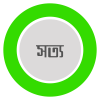 |
সত্যসংবাদের দাবির পক্ষে সত্যতা পাওয়া গেছে। ঘটনাটি সত্য, যে গণমাধ্যমে প্রকাশিত সেটি গ্রহণযোগ্য, এবং ফ্যাক্টওয়াচের যুক্তিপরম্পরায় কোনো মিসিং লিংক খুঁজে পাওয়া যায় নি। |
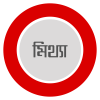 |
মিথ্যাসংবাদের দাবির পক্ষে প্রামাণ্য তথ্য পাওয়া যায় নি। বরং গ্রহণযোগ্য সূত্রসমূহ এর বিপরীত দাবি করছে। ফ্যাক্টওয়াচের যুক্তিপরম্পরায় মিসিং লিংক বিদ্যমান। |
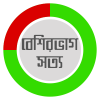 |
বেশিরভাগ সত্যসংবাদটুকুর অধিকাংশ তথ্যই সঠিক, কিন্তু সামান্য কিছু অংশ মনগড়া বা আন্দাজিভাবে বলা। |
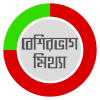 |
বেশিরভাগ মিথ্যাসংবাদটুকুর অধিকাংশ তথ্যই মনগড়া, সেটিকে গছিয়ে দেয়ার জন্য সামান্য কিছু সত্য তথ্যের সন্নিবেশ করা হয়েছে মাত্র। |
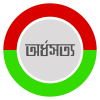 |
অর্ধসত্যমোটামুটিভাবে আধাআধি সত্য এবং মিথ্যা। দাবিতে সত্য এবং মিথ্যা উভয়েরই লক্ষণীয় উপস্থিতি রয়েছে। |
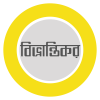 |
বিভ্রান্তিকরএই রেটিংটি ব্যবহারের ক্ষেত্র তুলনামূলকভাবে বিস্তৃত। বেশ কিছু ক্ষেত্রে এটি ব্যবহৃত হতে পারে: |
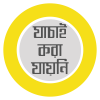 |
যাচাই করা যায়নিসংবাদের সূত্রসমূহ কিংবা সঠিক তথ্য দিতে সক্ষম এমন ব্যক্তিবর্গ বা এজেন্সিসমূহ নানাবিধ কারণে নাগালের বাইরে। নির্ভরযোগ্য উৎসের অনুপস্থিতি অথবা তা উদ্ঘাটন প্রক্রিয়া দুরূহ বিবেচিত হলে আমরা এই রেটিংটি করে থাকি। |
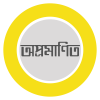 |
অপ্রমাণিতএই রেটিংটি নির্দেশ করে যে, কোন দাবির বিশ্বাসযোগ্যতা যাচাই প্রক্রিয়া সম্পন্ন হলেও অমীমাংসিত থেকে গেছে। |
Fact-Checking Methodology
Selecting a claim to fact-check
We are a part of the University of Liberal Arts Bangladesh campus community. Our undergraduate student interns from the Media Studies and Journalism program actively monitor news while keeping an eye on social media and popular discourse for potential claims that could be fact checked based on their potential impact. The fact check team shares its ideas with the editorial and advisory team that approves the final selection.
The claim is selected based on a number of factors, for example:
-
-
- Is it important in terms of public interest?
- Could it impact a large number of people?
- Is it difficult for people to assess the claim? Are the facts around it unclear or ambiguous? Are the facts easy to find?
- Is the content provocative, or sensitive, and could it potentially cause harm if left unchecked?
-
Steps of the fact-checking process
We go through the following steps to prepare our fact-checking report to file and publish:
-
- What have we found and where? What is the claim we need to fact-check? We check screenshots and archived links to locate the claim.
- Why is this claim being made? What is the context? If it is factual information, we gather evidence for the claim using primary sources. If it is a rumor or fake news, we observe if people are spreading it and reacting to it. Other instances of similar claims in different formats are also noted.
- Why could this claim be challenged? We gather evidence against the claim from primary and secondary sources, conflicting information and/or reports. We also assess reliability of the source(s).
- For both sides of the story, we look for primary sources — like information collected from contacting people directly, found on webpages and social media accounts, traceable expert opinions, scholarly literature (books and journal articles) — and secondary sources like reports from trustworthy media. For images and videos, we utilize trustworthy image assessment platforms like Google images, Tineye reverse image search etc.
- For our fact files, we depend on primary resources, focusing on articles published in peer reviewed academic journals.
- We are absolutely transparent about our reporting of fact-checks. We provide our complete list of sources in every report. We add notes on where we found evidence at every step as hyperlinked citations, so that our fact checking procedure and what tools we used is clear to readers. We also list the sources in a footnote. If the evidence is not easily accessible or stable, we save a screenshot for our own records and include them in our reports.
- Once the fact checking is complete, the fact-checker involved proposes an initial rating. The editors and researcher then debate the suitable rating for the claim. Most often than not, our procedure automatically points us towards one particular rating. However, in cases where there is still any disagreement among the team, we take a vote.
- We place our rating on the featured image of the report as well as at the beginning of the report along with a summary.
Categories
We have three generic categories and one titled Coronavirus, specifically created to address the pandemic situation.
-
- Internet rumors: Rumors, edited or morphed images and videos, unsubstantiated claims that are widely shared and/or viral on social media
- Fact File: These are not rumors or viral claims, but information that can be presented in misleading terms on mainstream and social media. In our Fact Files, we bring our readers credible research findings and analyses on such claims. These are further classified under, fact checks, ad checks, and other resources. Since advertising claims are an important source of information for the general public, we check these claims under this category. Political claims also fall within the purview of this category.
- FactWatch Video: Based on our fact-checking reports, we present easy to understand videos on issues of public interest.
- Coronavirus: This is a special category created to combat the rumors, false information, and misleading claims generated by the Coronavirus pandemic. This is further divided into three categories: Fact checks, Essential Information, and Community Initiatives. Although the latter two are not fact checks per se, they have a proactive role in keeping people safe from misleading claims. Therefore, we created these categories as our response to this global crisis.
Ratings
We rate our fact-checks in eight different ways:
 |
TrueWhen a claim has been proven to be true. The underlying incident or information has been verified, information about it is accessible, and we did not encounter any missing links in our fact-checking process. |
 |
FalseEvidence points against the claim. It does not hold based on the information available. There are missing links in the fact-checking chronology. |
 |
Mostly TrueThe claim is mostly true, but a small portion is misleading or unfounded. |
 |
Mostly FalseThe claim is mostly false, but accompanied by a modicum of truth that cannot be overlooked. |
 |
Half-TruthThere is significant evidence on both sides of the claim. We cannot veer toward either direction. |
 |
MisleadingThis rating has a relatively wide range:
|
 |
Could Not Be VerifiedPrimary sources or contacts that can verify information are beyond our reach. If we cannot find enough reliable sources to actually go through fact-checking, we rate claims as “could not be verified.” |
 |
Unproven
After we have done the fact-checking, if we still cannot establish a claim even though it is not false or misleading, we rate it unproven. |
